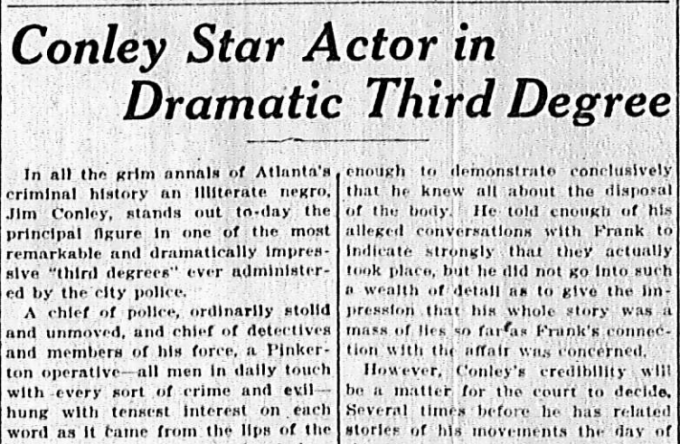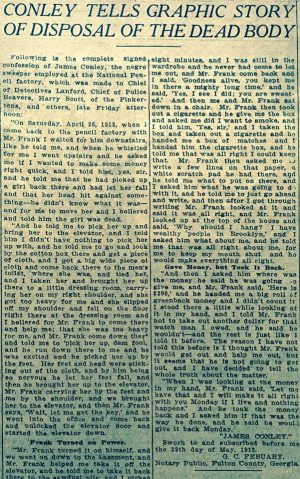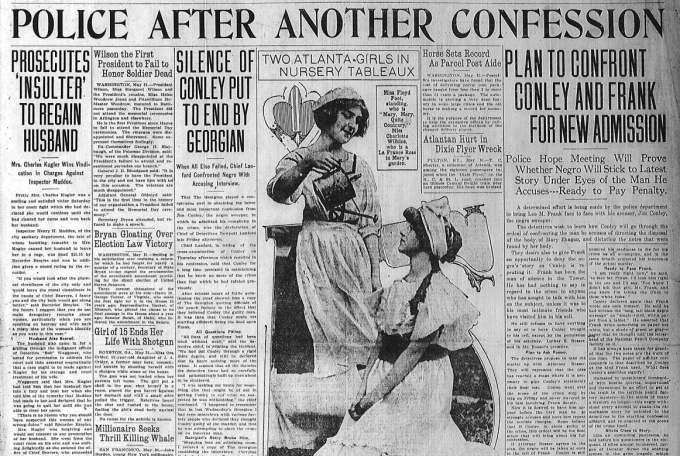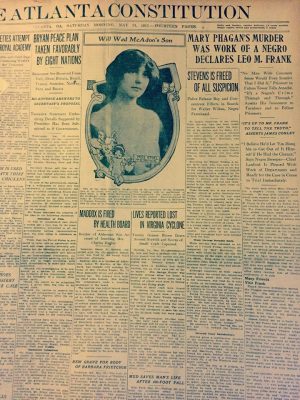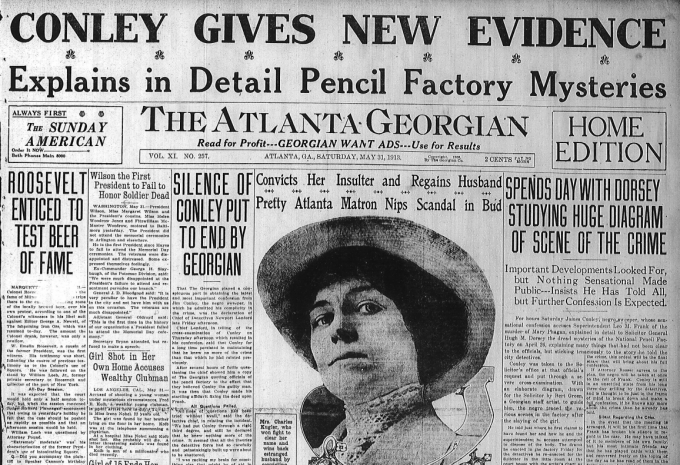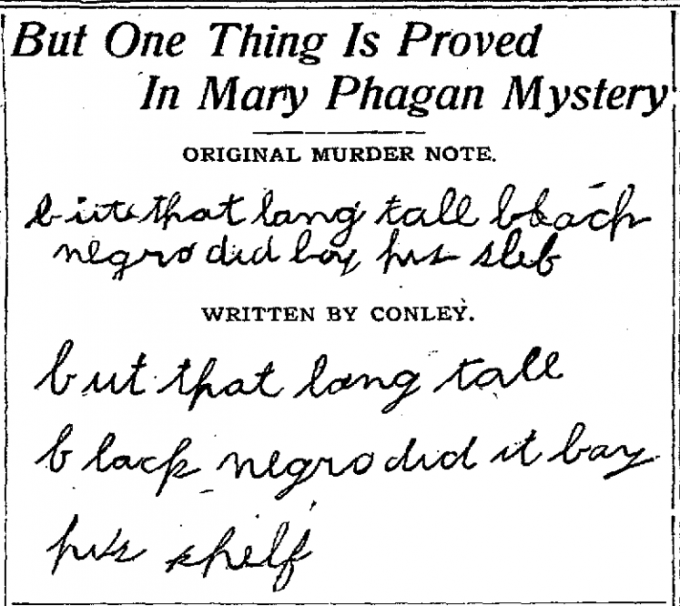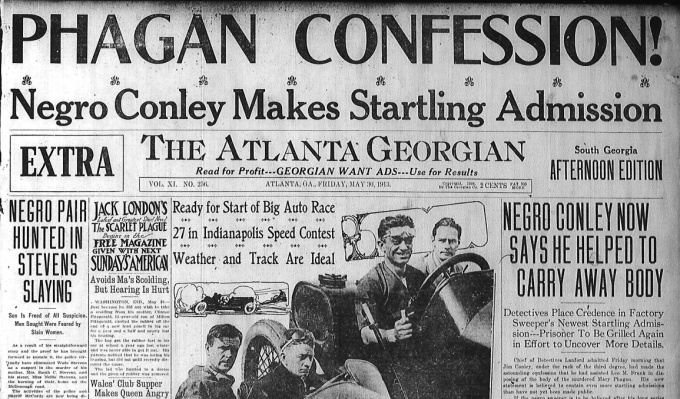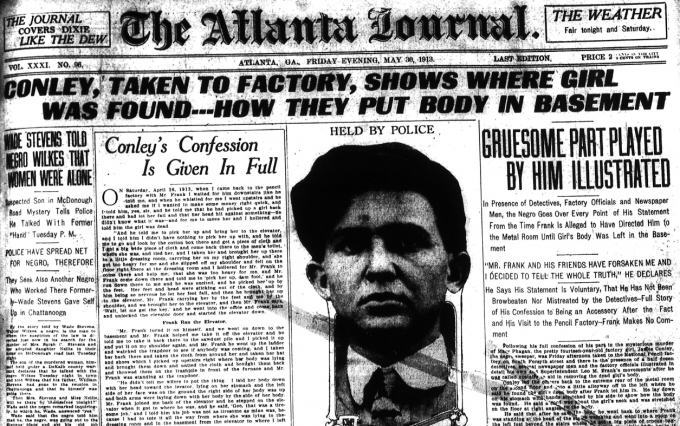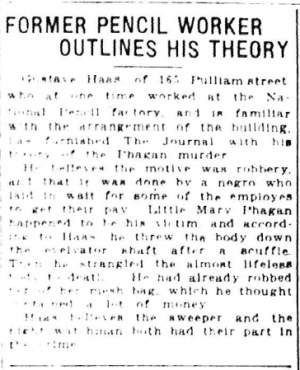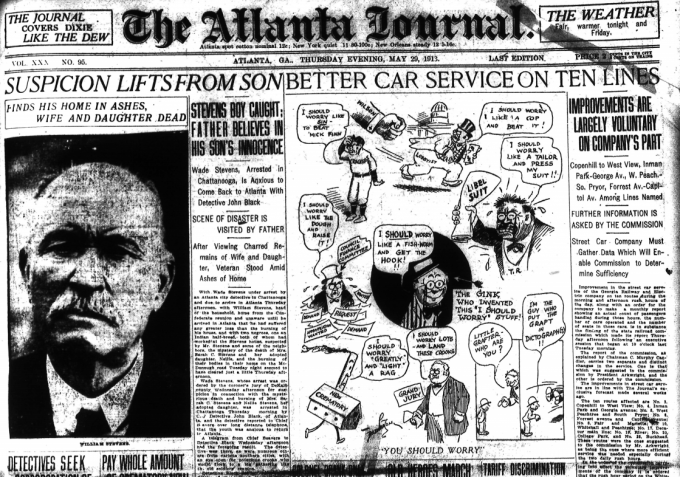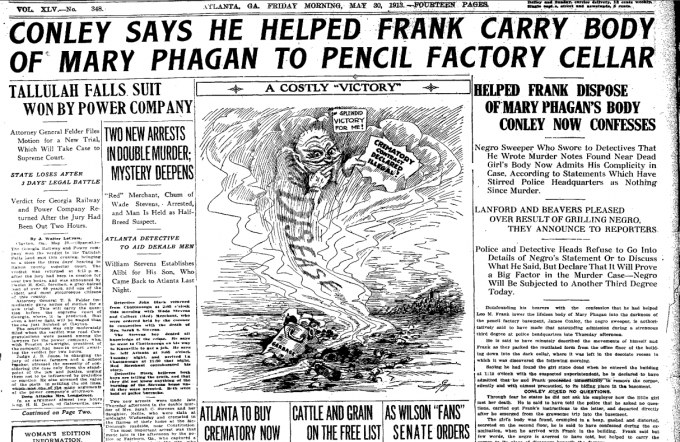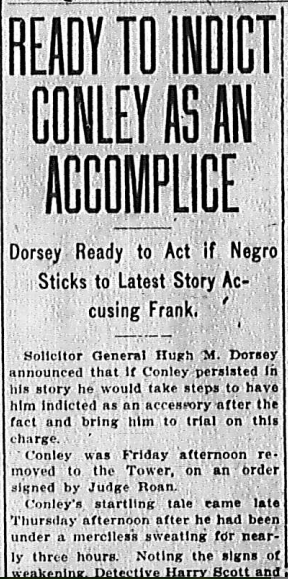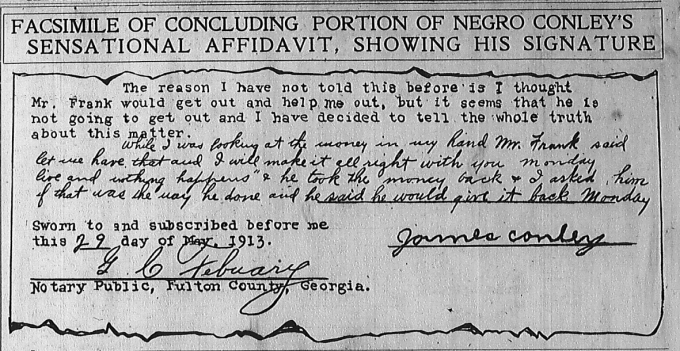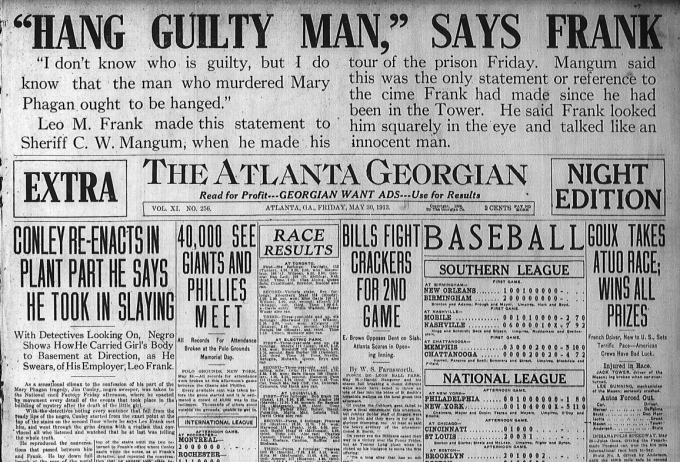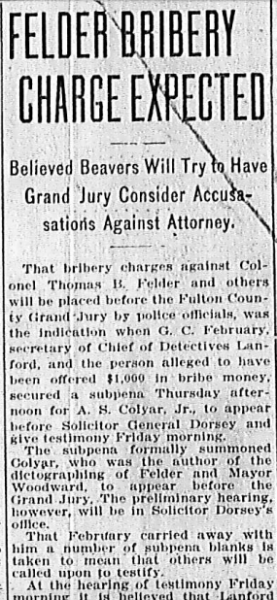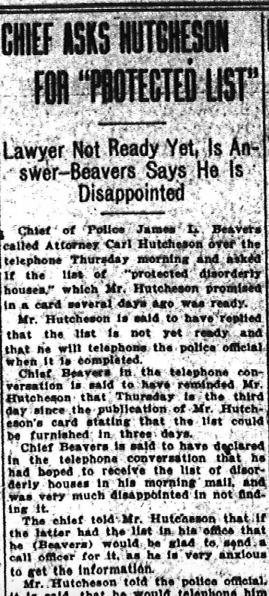Another in our series of new transcriptions of contemporary articles on the Leo Frank case.
Atlanta Journal
Sunday, June 1st, 1913
Chief of Detectives Gives Out Statement Relative to Transfer of Prisoner From the Tower to Headquarters
FURTHER QUESTIONING IS PLANNED BY DETECTIVES
No Arrangement Yet Made for Negro to Confront Frank—Report of Finding Girl’s Purse Proves Without Foundation
The prosecuting officials connected with the Phagan case all denied Saturday evening that the state’s theory of the murder has been changed by anything that the negro sweeper Conley has said, but the fact that the negro was transferred t police headquarters, where he can be freely examined by the detectives, seems to show that the officials are not fully satisfied with Conley’s story of the crime as it now stands.
Conley was permitted to leave the jail on an order signed by Judge L. S. Roan, of the superior court. Conley was perfectly willing to accompany the officers anywhere they desired to take him.
From the jail he was carried by Deputy Newt Garner to the solicitor’s office, and it is said that only after the solicitor had talked with the negro two hours and gone over all of the “rough places in the story” was the decision to take him to police headquarters, rather than the jail reached.
REASON FOR TRANSFER.
Two reasons are assigned by Detective Chief N. A. Lanford for the removal of Conley from the Fultin [sic] county jail back to the state cell in police headquarters, where he was imprisoned for more than three weeks.
The first, according to the chief, is that Conley requested that he be transferred back, stating in explanation or his request that he was greatly annoyed Friday night by persons who came to visit in the tower. Continue Reading →



